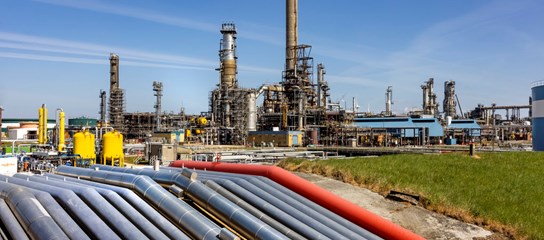Sweden-Belgium Green Shipping Corridor expands ambition for the world's first green ammonia shipping corridor and welcomes new partner
Port of Gothenburg, North Sea Port and DFDS welcome Port of Antwerp-Bruges to the Green Shipping Corridor. Together, the ports are strengthening their green ambitions by stepping up their efforts in electrification and ammonia bunkering.
From northern to southern Europe
2,500 kilometres. That is the distance from the northernmost to the southernmost point of the Green Shipping Corridor between Sweden and Belgium. The corridor potentially connects 11 European countries through sea, land, and rail routes from Norway in Northern Europe to Spain in the South. In this corridor, the ports of Gothenburg, North Sea Port and Antwerp-Bruges work as transportation hubs as well as important origin and destination zones of industrial activity. It is on this transport corridor that the ports want to achieve near zero-emission-free transport.
E-trucks, rail transport and onshore power supply
The aim is to have at least two DFDS ammonia-fuelled vessels in operation on the Corridor from 2030, a part of DFDS’s ambition to have six low- and near-zero-emission vessels in operation by 2030.
Jacob Andersen, Vice President, North Sea, DFDS: “This is a testament to our ambitions and commitment to play an active role in the green transition. We expect this to be the world's first green corridor for Ro-Ro cargo vessels running on near-zero emission ammonia fuel. This transition will not be possible without collaboration. We are working together with more than 50 partners to realise this project which will contribute to a more sustainable future for European shipping, and the ports are a key part of this.”
The ammonia-vessels will be complemented by electric trucks and rail transport on land, as well as onshore power supply for the vessels. Therefore, efforts are being intensified by the ports to facilitate electric terminal operations and enable safe ammonia bunkering. Furthermore, the partners are planning to start producing significant amounts of renewable electricity.
Working together
The three original partners signed an MoU in 2022 to work together to decarbonise the shipping corridor between Sweden and Belgium and to create a scalable solution. The addition of the Port of Antwerp-Bruges to this coalition strengthens this commitment.
Daan Schalck, CEO, North Sea Port: “I’m very happy to see our original initiative develop into a wider network and I am committed to build further on our collaborative experience. The Belgian Swedish Green Corridor is an important milestone towards decarbonizing the logistics sector and delivering on European resilience. It goes beyond the typical high-level language and includes concrete pledges on which we as a port together with our clients and stakeholders want to deliver.”
DFDS has applied for funding for a total of four ammonia-fuelled vessels. If the funding is granted, the project including electrification in the ports is expected to reduce 328,000 tonnes CO2 emissions per year. This corresponds to about 11% less emissions compared to 2023.
Patrik Benrick, Head of Strategic Development & Innovation, Port of Gothenburg: "The Port of Gothenburg is already in the early stages of developing operating regulations for a safe and efficient handling and bunkering of ammonia propelled vessels. We are also working on establishing an ammonia value chain, with the purpose of being able to facilitate everything needed for ammonia propelled vessels calling and bunkering in the port on a regular basis in 2030 and beyond."





